

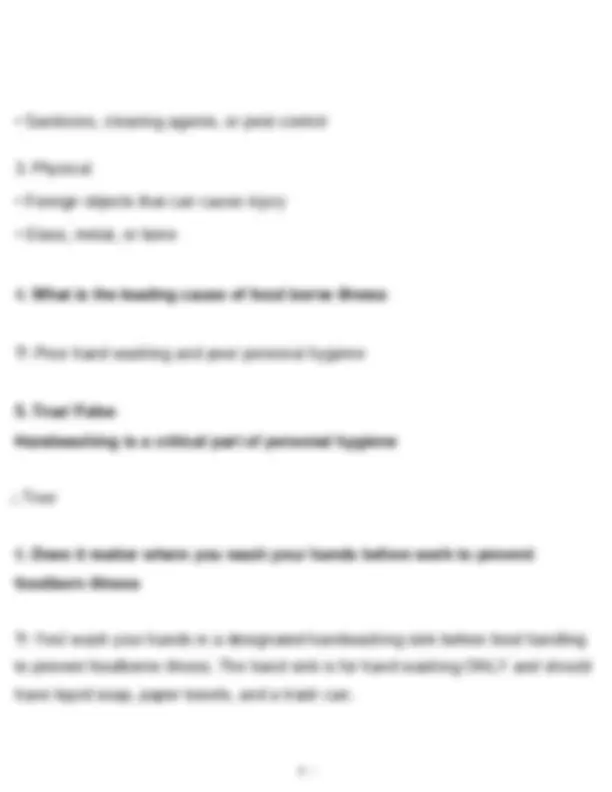
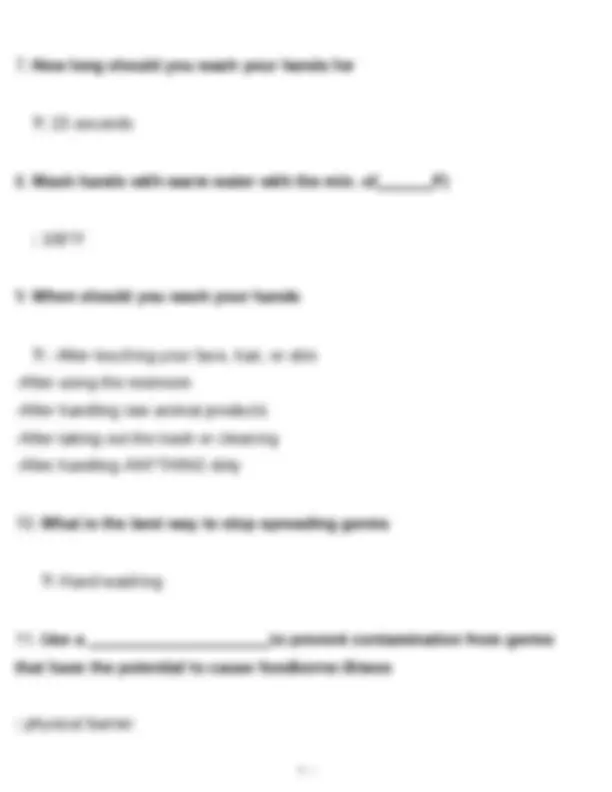
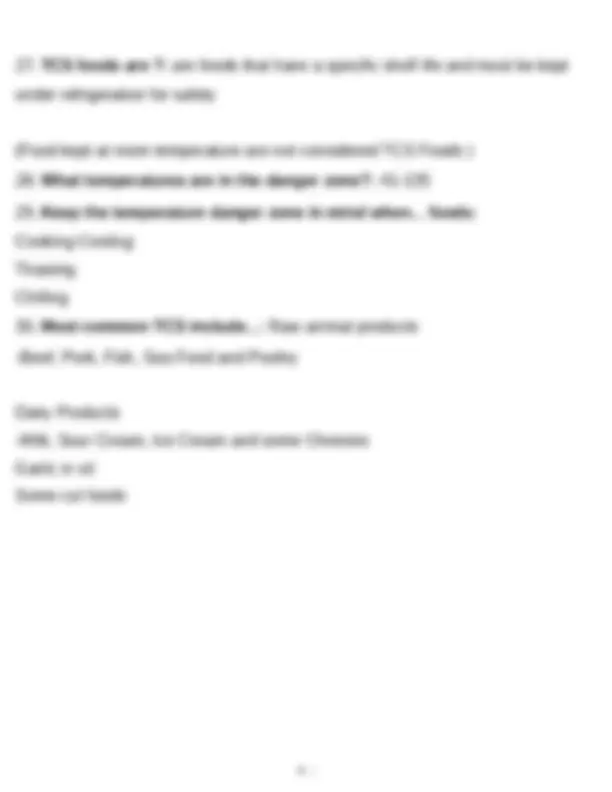
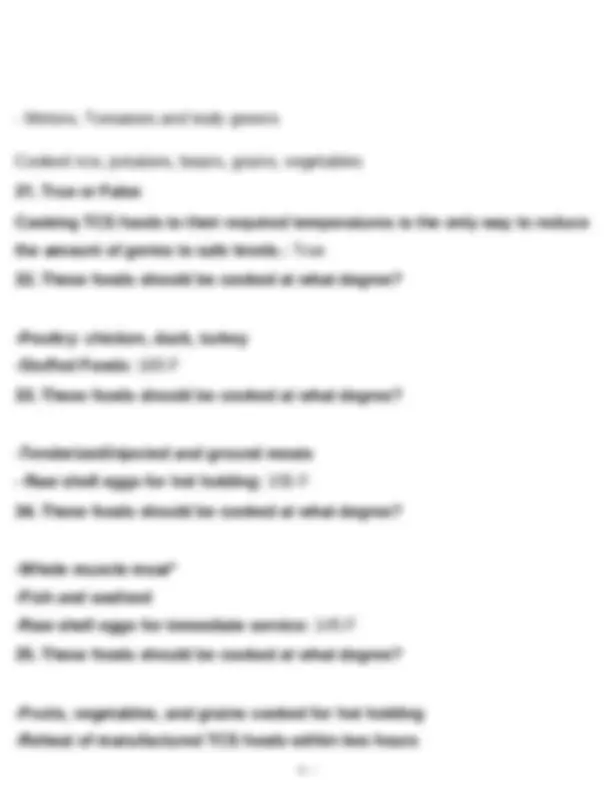
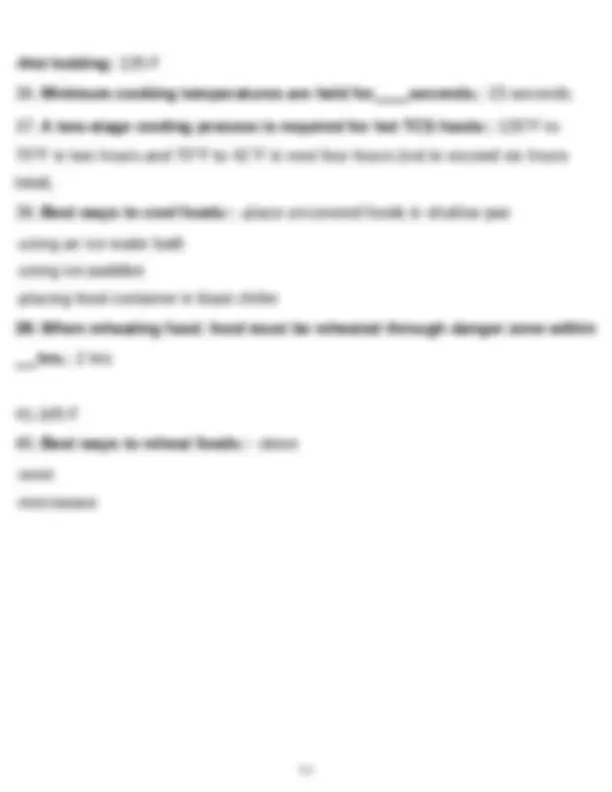
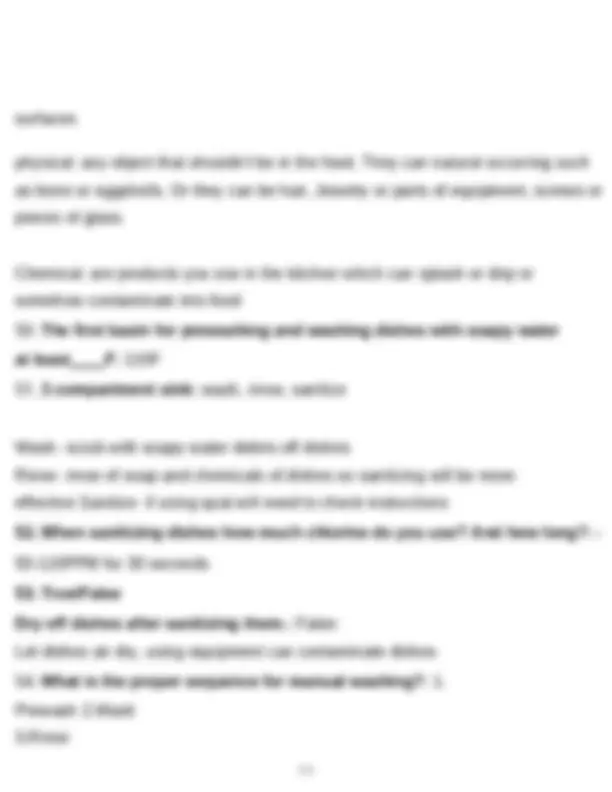
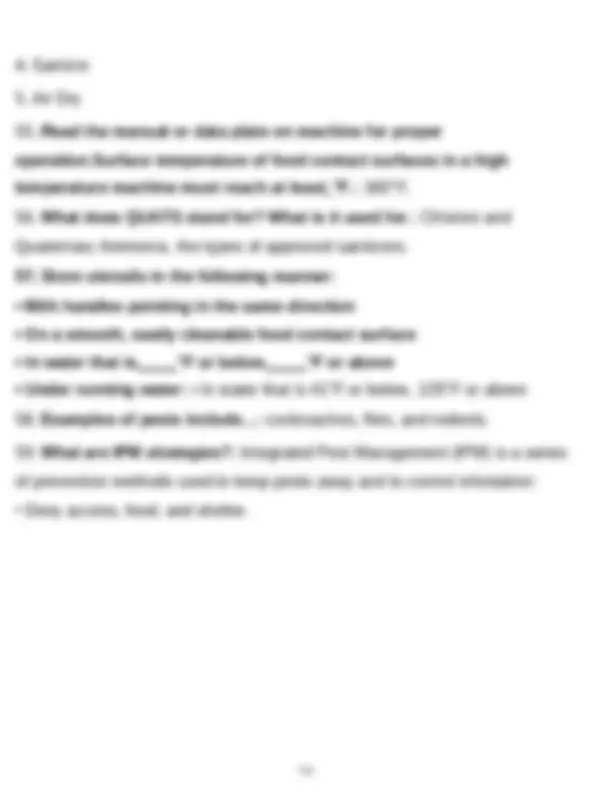



Study with the several resources on Docsity

Earn points by helping other students or get them with a premium plan


Prepare for your exams
Study with the several resources on Docsity

Earn points to download
Earn points by helping other students or get them with a premium plan
Community
Ask the community for help and clear up your study doubts
Discover the best universities in your country according to Docsity users
Free resources
Download our free guides on studying techniques, anxiety management strategies, and thesis advice from Docsity tutors
1. SNHD food handler card exam requirements 2. How to study for SNHD food handler exam 3. SNHD food safety exam practice questions 4. Online SNHD food handler card test preparation 5. SNHD food handler exam passing score 6. Free SNHD food safety practice exam 7. SNHD food handler card renewal exam tips 8. SNHD food handler exam in Spanish 9. SNHD food safety certification exam schedule 10. SNHD food handler card exam locations 11. How long is the SNHD food handler exam 12. SNHD food handler exam retake policy 13. SNHD food safety exam study guide PDF 14. SNHD food handler card exam cost 15. What to expect on SNHD food handler exam 16. SNHD food safety exam for temporary events 17. SNHD food handler card exam validity period 18. SNHD food handler exam time limit 19. SNHD food safety exam topics covered 20. SNHD food handler card exam for minors 21. SNHD food handler exam difficulty level 22. SNHD food safety exam multiple-choice questions
Typology: Exams
1 / 16

This page cannot be seen from the preview
Don't miss anything!










3.Improper Cooking Temperatures/Methods
3. FOOD HAZARDS : 1.Biological
-Hot holding: 135 F
41. True/ False Placing frozen foods in room temperature degrees is a safe way to thaw food.: False it is unsafe because the outside of the food risks entering in the temperature danger zone while waiting on the inside to thaw
surfaces physical: any object that shouldn't be in the food. They can natural occurring such as bone or eggshells. Or they can be hair, Jewelry or parts of equipment, screws or pieces of glass. Chemical: are products you use in the kitchen which can splash or drip or somehow contaminate into food
bacteria in food establishments.